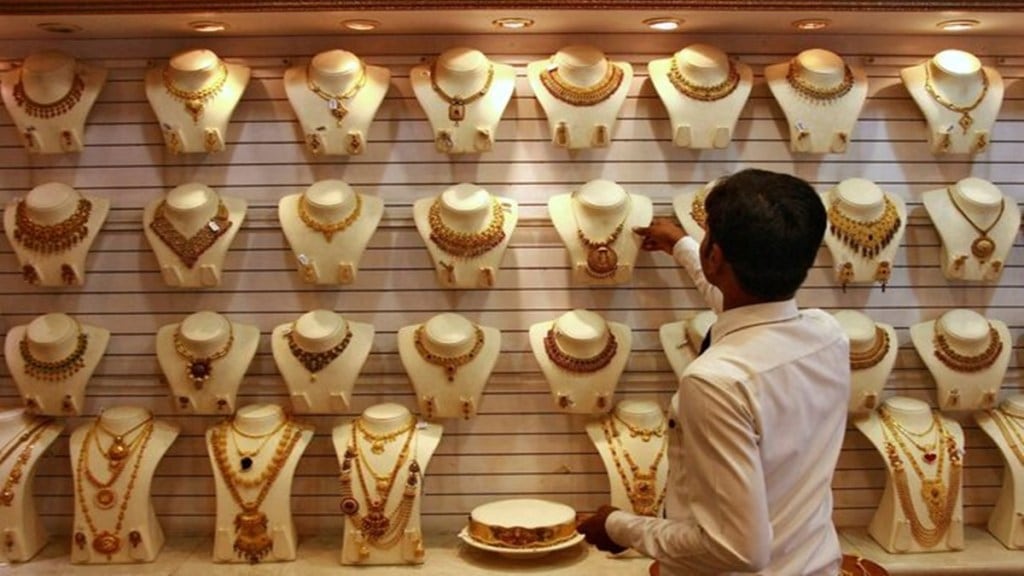By Ajay Srivastava
The record gold imports last month widened the trade deficit and pushed the rupee to an all-time low. While a calculation error may have led to overestimating the imports, there could be other factors at play also, explains Ajay Srivastava
Record imports in November
India’s gold imports reached an all-time high of $14.9 billion in November 2024, far exceeding the monthly average of $3.8 billion for FY 2024, when total gold imports were $45.5 billion. In November, gold accounted for 21.2% of India’s total merchandise imports of $70 billion, surpassing crude petroleum as the largest single import item for the first time.
Gold imports in November 2024 surged by 331.4% compared to the same month in 2023. Excluding gold, India’s merchandise imports would have grown by only 6.7%, against the reported 27.04%. This spike significantly widened the trade deficit, putting downward pressure on the rupee, which has depreciated against the US dollar. A weaker rupee further raises import costs, worsening the current account deficit.
Tariff cut adds to the appeal
The cut in import tariffs from 15% to 6% in the last Budget made domestic gold prices more competitive with global rates, encouraging legal imports and boosting its appeal as a long-term investment. Imports have also risen as investors seek safer options amid overheated stock markets. During Diwali, demand for gold coins, especially in 20, 50, and 100-gram sizes, exceeded supply, with premium pricing. This trend continues with gold bars and jewellery as the wedding season begins. Speculation about a potential increase in import levies from 6% to 10% in the coming Budget is further driving imports. Traders anticipate quick gains if tariffs rise, while rising global prices reduce the risk of losses even if tariffs stay the same.
Impact of the India-UAE trade deal
The India-UAE Comprehensive Economic Partnership Agreement (CEPA), effective from May 1, 2022, has boosted imports of gold, silver, and platinum by offering low-duty access. Dubai does not mine gold; instead, gold from other countries is minimally processed locally to meet CEPA norms and then routed to India. To manage this surge, India reduced the Most Favoured Nation duties on gold and silver from 15% to 6% in the 2024 Budget. This, however, provided only temporary relief as CEPA will gradually cut tariffs on these imports to zero in the next few years. Thus, in August, the government decided to review its pact with the UAE to revoke these concessions and control the surge.
Multiple import routes
Gold enters India primarily as bars and rods with 99.99% purity but also comes in other forms that exploit tariff-free or concessional routes. One example is gold contained in platinum alloys from Dubai. Classification rules allow platinum alloys with up to 98% gold to be labeled as platinum alloy. Since CEPA permits unlimited platinum alloy imports, traders separate the gold after importing it. These imports surged from $8.9 million to $1.6 billion during January-September 2024, a massive 17,994% increase compared to the same period last year.
Similarly, gold compounds from Japan, allowed duty-free under the India-Japan free trade agreement (FTA), totalled $621.7 million during this period, with the gold extracted and sold domestically. Another route is gold and silver jewellery imports from Indonesia, which reached $905.2 million under the ASEAN-India FTA, benefiting from tariff-free access.
The Reserve Bank of India imports a large amount of gold regularly, however, such imports are under capital account and not included in commercial import data. These alternative channels significantly inflate actual gold imports beyond official figures.
Likely data error
There is speculation that some gold imported by an SEZ may have been double-counted, potentially explaining the surge in import figures. However, only gold entering through a bill of entry filed at Customs is considered an import. Movements within the country, such as for use in SEZs, EOUs, or Gift City, or subsequent domestic sales, don’t qualify as imports and should not be included in import data. The Directorate General of Commercial Intelligence and Statistics and CBIC may need to verify if there has been any deviation from this practice. The government must address these concerns to ensure data integrity.
Exclude precious metals from FTAs
India’s experience with the CEPA highlights the risks of duty concessions on gold, silver, and platinum in FTAs. These high-value, low-volume imports disproportionately impact trade deficit and forex reserves, undermining macroeconomic stability. India should not offer any tariff cuts on precious metals under FTAs.
The writer is founder, Global Trade Research Initiative.
Disclaimer: Views expressed are personal and do not reflect the official position or policy of FinancialExpress.com. Reproducing this content without permission is prohibited.

